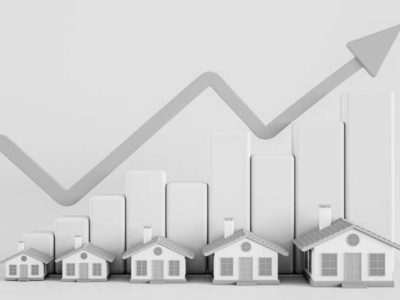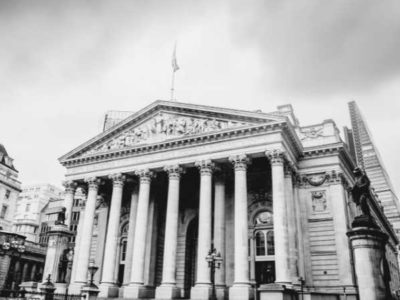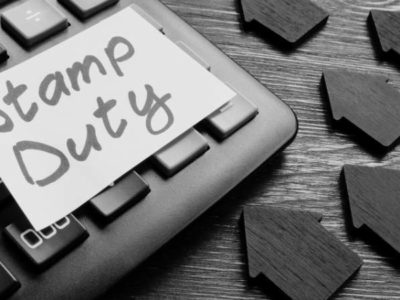- CPI inflation held steady at 4% in January. Economists had predicted a small rise.
- Prices were down 0.6% in a month.
- It’s a long way from the peak at 11.1% in October last year, but clearly this isn’t going to be a smooth downwards path.
- Core CPI inflation (stripping out energy, food, alcohol and tobacco) also held steady at 5.1%.
- The CPI services rate rose from 6.4% to 6.5%.
- What next?
- What it means for savings.
- What it means for mortgages.
- What it means for pensioners.
The ONS has released inflation figures for January: Consumer price inflation, UK – Office for National Statistics
Sarah Coles, head of personal finance, Hargreaves Lansdown:
“Like a tall man in a cramped cottage, we were braced for a bump, so it’s a relief that inflation held at 4%. The even better news is that it’s expected to fall sharply from here. However, we can’t afford to relax, because there will still be bumps along the way.
Behind the placid headline figure, there was plenty of movement. The £94 hike in the energy price cap in January means that electricity was up 4% on the month and gas up 6.8%. Both are down over the year and energy prices are nowhere near as painful as in the immediate aftermath of the invasion of Ukraine. Prices are down 18% from the peak in January 2023. However, they’re still far higher than before all this started – up 89% since January 2021. Energy bills are still a stretch for millions of families, and separate ONS figures show that more than two in five say it’s difficult to pay these bills.
Petrol prices eased a little – but not as much as they did the same time last year – putting upwards pressure on inflation despite the fact diesel prices are 13.8% lower than this time last year and petrol down 6.4%. Meanwhile second-hand car prices rose slightly during the month for the first time since last May. Elsewhere in the transport sector, the usual annual cheap flight bonanza kicked in at the start of the year. Air fares fell further than the same time a year earlier, offsetting some of the rises elsewhere.
The inflation rate of food and non-alcoholic drink eased for the 10th month in a row – to 6.9%. For the first time since September 2021, food prices actually fell in the month – by 0.4%. This is actually the biggest fall since July 2021. As ever, how this affects you depends an awful lot on what you buy, and some baskets will still be far pricier than they were this time last year, with hot chocolate up 25.1%, olive oil up 38.2% and sugar up 18%. If you buy alcohol and tobacco, inflation is still at 12.4%. Meanwhile, comfort eating became more affordable as cake, chocolate biscuits and crisps helped bring food inflation down. And vitally the price of some staples has actually fallen, including whole milk down 10% and butter 7.8%. Unfortunately, this doesn’t mean we’re set for a bargain trolley dash any time soon: when you look over the past two years, food and non-alcoholic drink prices still are up an eye-watering 25%.
Furniture and household goods also weighed in on the side of lower inflation, with prices falling 3.1% between December and January. Furniture and furnishings played a big part in this, as all those New Year sofa and kitchen sales ate into higher prices.
What next?
It’s highly likely that inflation is going to trend downwards from here. The economy is expected to have slipped into a recession at the end of last year, so demand is likely to weaken further. Inflation is expected to dip significantly lower in the months to come, towards the Bank of England’s target in the Spring, when lower wholesale gas prices feed into the figures.
That’s not the end of it though, unfortunately, because after hitting the target it’s expected to bounce back, and take a while to drop back again. As a result, the Bank of England has already said it’s not going to cut in a hurry. A surfeit of caution means they won’t cut until lower inflation has bedded in, and we’re a fair way from that. There are still some economists forecasting a cut as early as May, but there’s every chance we won’t see this until the second half of the year. The market has also started pricing in fewer rate cuts by the end of the year.”
What it means for savings
Mark Hicks, head of active savings, Hargreaves Lansdown:
“With the average easy access rate offering 3.17% (according to Moneyfacts), and inflation at 4% in January, an awful lot of people will be back to seeing inflation outpace out savings. But it doesn’t have to be this way.
You don’t have to settle for an average savings rate when there are still inflation-busting deals over 5% on the table, so it’s vital to shop around for a better deal from a newer online bank, building society or savings platform. It’s also worth bearing in mind that savings rates are forward-looking, and inflation is expected to fall over the coming 12 months, which means your savings could stay well ahead, and your emergency savings safety net can remain well padded in case of tougher times.”
What it means for mortgages
Sarah Coles:
“Steady inflation won’t build any enthusiasm for rate cuts – particularly with the inflation of services actually rising. This is another blow for remortgagers, who saw mortgage rates fall at the start of the year, only to find them stalling and then rising slightly in recent weeks. We’re suffering as the market reassesses just when the Bank of England is likely to cut, and just how many rate cuts we might get this year. It doesn’t mean the Bank is considering raising rates, or that mortgage rates will stop trending downwards. It may just take longer for mortgage rates to fall.
For those with a remortgage on the cards, it means you can’t cross your fingers and hope for rate cuts. You need to plan based on rates remaining higher for longer, and consider how you can afford your new monthly payments. If you don’t have a hope of stretching your finances, there will be alternatives available from your lender, including lengthening the mortgage term. You’ll pay more in the long term for this, but it will make the monthly payments more affordable, which for many people is their top priority right now.”
What it means for pensioners
Helen Morrissey, head of retirement analysis at Hargreaves Lansdown:
“Inflation has flatlined at 4% in the latest twist in the road down to 2%. It’s far lower than the eye-watering 11.1% we’ve seen previously, but it’s still enough to keep a tight squeeze on already stretched pensioner budgets. April’s 8.5% rise in state pension will be truly welcome, but right now it feels very far away.
This slowing down in inflation brings a dilemma for those looking to purchase an annuity for their retirement income – do they go inflation-linked or not? The recent memory of soaring prices will be fresh in many pensioners’ minds and may prompt them to take a look. However, many may be put off by the fact that an RPI linked annuity currently pays out £4,554 per year on a £100,000 pension according to data taken from HL’s annuity search engine. This compares to up to £7,117 for a level product. There’s a decision to be taken as to whether the budget can stretch far enough today to accept the lower amount with the prospect of increases in the future.
The experience of the past few years shows the importance of having headroom in your budget to tackle price spikes when they come. We recommend people in retirement keep one to three years’ worth of essential expenditure in cash, so they have the headroom to meet rising costs if needed. It can negate the need for people in income drawdown to increase withdrawals to keep up with increases in their day-to-day costs or could act as an important top up for annuity income.”

























Comments